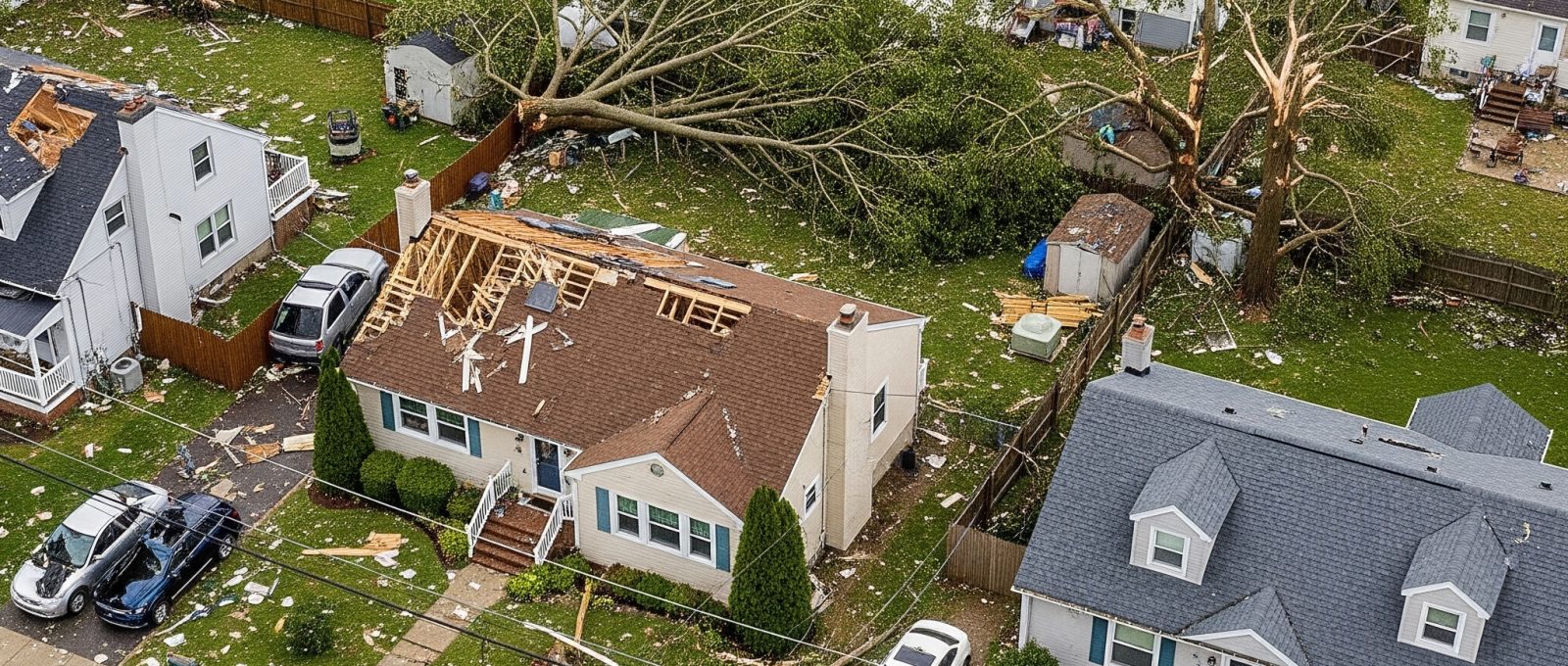New Jersey’s charming tree-lined streets and lush backyards are part of what makes owning a home here so appealing. But those same trees that provide shade and curb appeal can also be a major threat to your roof. From overhanging limbs to falling branches and leaf buildup, tree damage is one of the most common—and preventable—causes of roof problems in the Garden State.
At All Pro 1 New Jersey, we regularly repair roofing systems damaged by nearby trees. In this post, we’ll explain how trees can harm your roof, the warning signs to watch for, and how you can prevent expensive repairs with simple, proactive steps.
📞 Call (201) 773-6635 or request a free roof inspection today to assess your risk and protect your home.
Common Types of Tree-Related Roof Damage
1. Falling Branches or Trees
Severe thunderstorms, high winds, and winter snow loads can easily snap branches or even topple entire trees. These heavy limbs can:
-
Crack or puncture shingles
-
Damage gutters, flashing, and skylights
-
Break roof decking or even cause structural collapse
New Jersey storms are increasingly unpredictable, so even healthy-looking trees can pose a threat.
2. Overhanging Branches
Branches that rub or hang over your roof may seem harmless, but over time they:
-
Scrape off protective granules on shingles
-
Tear or lift shingles during windy conditions
-
Provide easy access for squirrels, raccoons, and insects
This constant contact accelerates wear and tear, especially on older roofing materials.
3. Leaf and Debris Buildup
Fallen leaves, pine needles, and acorns collect in valleys and gutters, leading to:
-
Blocked drainage
-
Ice dams in winter
-
Moisture retention that promotes moss and mold
Clogged gutters and standing water are two of the fastest ways to weaken a roofing system.
4. Root Damage (for Flat Roofs)
In rare cases, tree roots from nearby trees can impact the drainage systems or foundations of homes with flat roofs or built-in gutters. While less common, this is still worth considering if your trees are very close to the home.
How to Prevent Tree Damage to Your Roof
1. Keep Branches Trimmed Year-Round
One of the simplest ways to protect your roof is to keep trees at least 6–10 feet away from your roofing system. Trimming prevents contact and reduces the risk of breakage during storms.
Tip: Avoid trimming large limbs yourself. Hire a licensed arborist for major pruning.
2. Clean Gutters and Valleys Every Fall
When leaves pile up in gutters, they block drainage, leading to water pooling and roof leaks. Clean gutters at least twice per year—especially in fall.
Consider installing gutter guards to reduce buildup and maintenance.
3. Remove Dead or Dying Trees
Trees that lean, have dead branches, or show signs of decay are especially hazardous. Have an arborist evaluate them for removal before they cause serious damage during the next storm.
Warning signs include:
-
Cracks in the trunk
-
Large areas of dead leaves or bark
-
Mushrooms or fungus at the base
4. Install Tree-Safe Roofing Materials
If your home is heavily surrounded by trees, consider choosing roofing materials that better withstand impact—like architectural shingles, metal roofing, or synthetic slate. These hold up better under minor branch impact than traditional 3-tab asphalt shingles.
Signs of Tree Damage on Your Roof
If you notice any of the following, you may already have tree-related roof damage:
-
Missing or curled shingles near tree lines
-
Gutter leaks or water overflow
-
Moss, mold, or algae growth under shaded areas
-
Broken limbs resting on the roof
-
Pest entry points (holes near soffits or eaves)
📞 If you spot these signs, call All Pro 1 New Jersey at (201) 773-6635 for an inspection before the next storm causes more damage.
Why Tree Damage is More Common in New Jersey
New Jersey’s mix of older trees, suburban density, and seasonal extremes makes roofs here especially vulnerable:
-
Nor’easters and hurricanes bring high winds that break limbs
-
Heavy snow and ice weigh down branches, causing them to snap
-
Humid summers accelerate moss and algae growth under tree shade
-
Dense suburban development means many roofs are in close proximity to trees
That’s why it’s essential to take preventive action now, before an unexpected storm hits.
Don’t Wait Until It’s Too Late
A single broken branch can cost thousands of dollars in roof repairs—or even require a full replacement. Routine maintenance and strategic trimming can prevent 90% of tree-related roofing damage.
At All Pro 1 New Jersey, we offer:
-
Free roof and gutter inspections
-
Tree-related damage repair
-
Emergency storm response
-
Preventive maintenance plans
-
Full roof replacements with impact-resistant materials
📞 Call (201) 773-6635 or book your free estimate now to protect your roof from tree damage.

